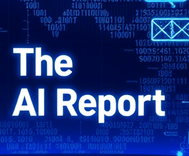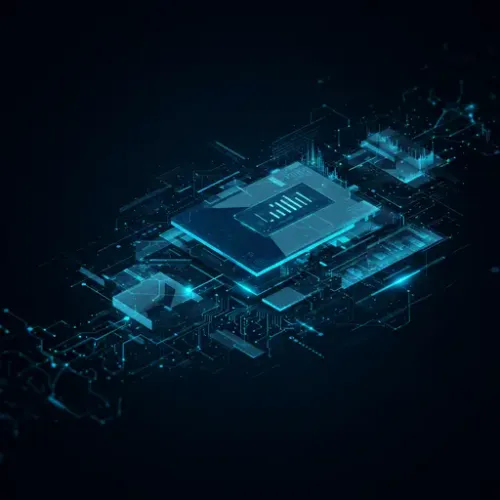Artificial intelligence drives the demand for the electric grid

The AI Report
Daily AI, ML, LLM and agents news
Artificial Intelligence and the Electric Grid: A Growing Challenge
The rapid acceleration of artificial intelligence (AI) capabilities is one of the defining technological shifts of our time. As AI models become more complex and their applications proliferate across every sector imaginable, from autonomous systems to sophisticated data analysis and personalized services, they bring with them a critical and escalating demand: power. The sheer computational muscle required to train, run, and scale these advanced AI systems translates directly into massive energy consumption, putting unprecedented pressure on our existing electric grid infrastructure.
At the heart of AI's energy appetite are data centers filled with thousands upon thousands of high-performance processors (GPUs and specialized AI chips). These facilities are already significant electricity users, but the unique demands of AI workloads, characterized by intensive, continuous computation, push consumption to new heights. A single large language model training run can consume energy equivalent to thousands of average homes over its duration. As AI becomes integrated into more products and services, the number and size of these energy-hungry data centers are projected to increase dramatically.
The Strain on Infrastructure and Supply
Our current electrical grids, while constantly evolving, were primarily designed to meet more predictable, distributed patterns of demand. The emergence of large, concentrated loads from AI data centers in specific locations presents a significant challenge. These facilities not only demand enormous quantities of power but also require an exceptionally high degree of reliability and stable voltage. Any interruption, even brief, can result in significant financial losses and operational disruptions for AI-dependent businesses.
Meeting this concentrated, high-volume, and high-reliability demand necessitates substantial investment in grid infrastructure. This includes upgrading transmission and distribution lines, enhancing substation capacity, and improving grid stability mechanisms. The pace at which AI is growing means these upgrades are needed rapidly, often outpacing traditional infrastructure planning and development cycles. This creates potential bottlenecks that could slow down AI deployment or strain local power supplies.
Key Takeaways from the Growing Demand
- Exponential Growth: AI's energy demand is not linear; it's growing exponentially as models become larger and more complex, and their deployment becomes more widespread.
- Data Center Concentration: The energy impact is heavily concentrated in areas hosting large AI data centers, creating localized grid strain.
- Reliability Imperative: The need for highly reliable power for AI operations adds another layer of complexity and cost to grid management.
- Outpacing Planning: The speed of AI development is challenging the slower pace of energy infrastructure planning and build-out.
Navigating the Future: Actionable Insights
While the challenge is substantial, the increased demand driven by AI also serves as a powerful catalyst for innovation and investment in the energy sector. Addressing the energy needs of AI can accelerate the adoption of smarter grid technologies and cleaner energy sources.
Consider these actionable steps and perspectives:
- For Energy Policy Makers: Proactive policy is crucial. Foster collaboration between the energy and tech sectors. Incentivize the development of new generation capacity, particularly renewables and low-carbon sources, specifically located to serve data center clusters. Streamline permitting processes for grid upgrades and new power plant construction.
- For Utility Companies: Engage early and often with potential AI data center developers to understand future load requirements. Invest in grid modernization technologies, including advanced sensors, automated controls, and energy storage solutions, to enhance capacity, resilience, and efficiency. Explore innovative rate structures or power purchase agreements tailored to large-scale, high-reliability consumers.
- For AI & Tech Companies: Energy efficiency must be a core design principle for AI hardware, software, and data center operations. Source energy responsibly, prioritizing renewable energy procurement (via PPAs, green tariffs, or on-site generation). Consider the robustness and future energy potential of a location when deciding where to build new facilities. Advocate for policies that support grid modernization and clean energy expansion.
- For Researchers & Innovators: Develop more energy-efficient AI algorithms and hardware. Explore novel cooling techniques for data centers. Research and deploy AI *itself* to optimize grid operations, predict demand more accurately, manage renewable energy intermittency, and improve overall energy efficiency across sectors.
The Interconnected Future
The relationship between AI and the electric grid is set to become even more intertwined. While AI demands more energy, AI technologies simultaneously offer powerful tools to manage and optimize complex energy systems. Leveraging AI for grid management, predictive maintenance, demand forecasting, and enhancing the performance of renewable assets could be a key part of the solution to its own energy footprint.
Successfully navigating the energy demands of AI requires a coordinated, forward-thinking approach involving stakeholders across technology, energy, and government sectors. This challenge is more than just an infrastructure problem; it's an opportunity to build a more robust, efficient, and potentially cleaner energy future capable of supporting the next generation of technology.

The AI Report
Author bio: Daily AI, ML, LLM and agents news
